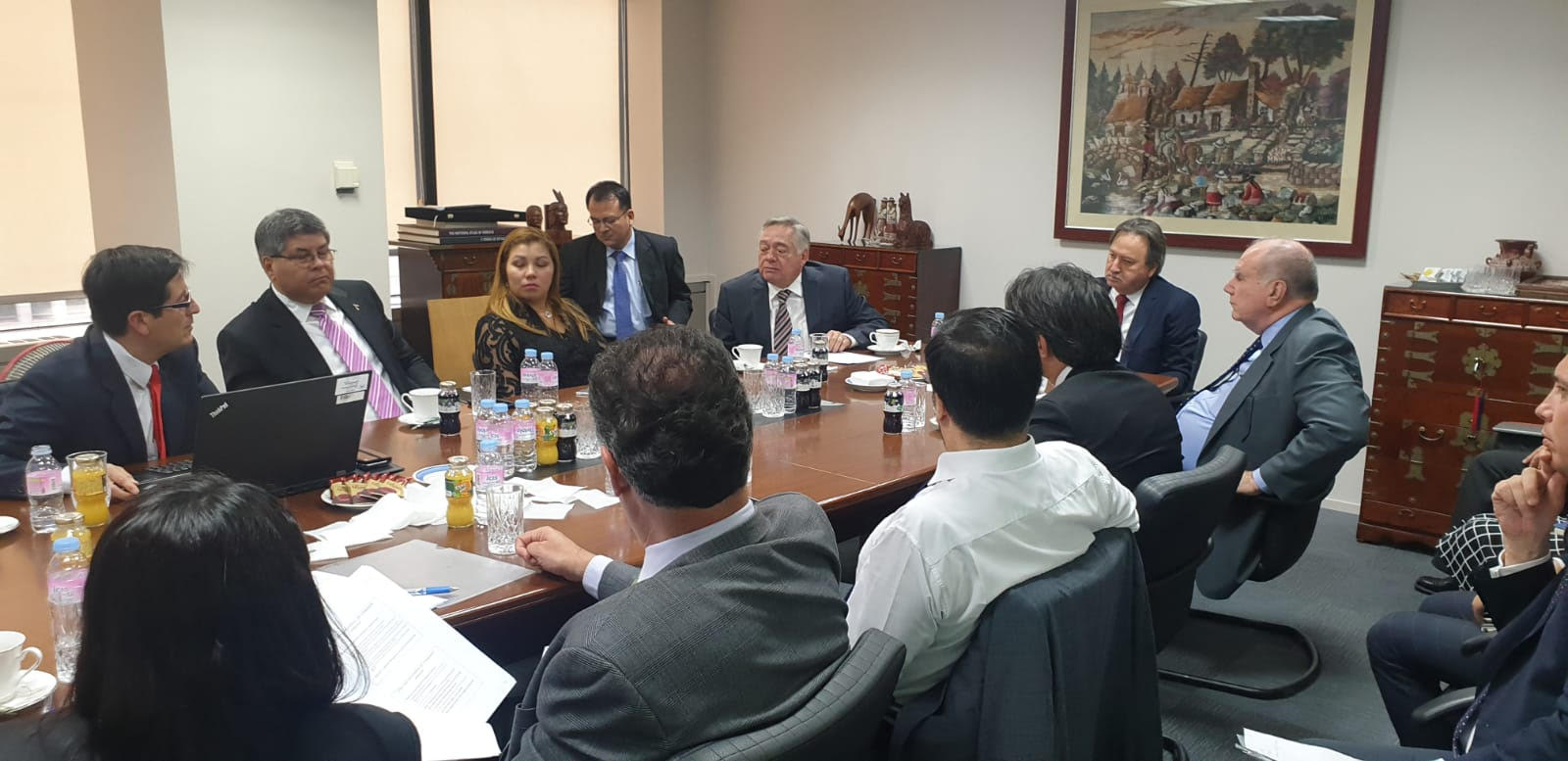Intra- and inter-regional value chains: Latin America and the Caribbean and Asia-Pacific
Work area(s)
Event information

Date
Event type
In the city of Seoul, José Durán, Chief of the Regional Integration Unit of the Division of International Trade and Integration of ECLAC, presented the main results of the project “Value Chain Development for the Deeper Integration of East Asia and Latin America”. The meeting, which took place at the embassy of Peru and was attended by representatives of the Group of Ambassadors of Latin America and the Caribbean (GRULAC), was convened by Raúl Silverio Silvagni, Ambassador of the Republic of Paraguay in the Republic of Korea and Dean of GRULAC in Seoul.
The presentation served as a space for ECLAC to inform the GRULAC member countries of the results of the projects: “Input-Output Tables for Industrial and Trade Policies in Central and South America” and “Value Chain Development for the Deeper Integration of East Asia and Latin America”. These results were recently transmitted in the international seminar “Input-Output Tables as a Tool for Trade and Industrial Policy in Latin America and Relations with Asia-Pacific” and in the roundtable “Dynamics of the Intra and Inter Regional Value Chains and Integration in Latin America and Asia”, which took place in the Dominican Republic on September 11-13, with the support of the Ministry of Foreign Affairs of the Dominican Republic, the Forum for East Asia-Latin America Cooperation (FEALAC) and the Economic and Social Commission for Asia and the Pacific (ESCAP).
In Seoul, the debate focused on the scope of value chains in Latin America and the region’s relationship with Asia-Pacific, which deepened in the last two decades, particularly as a result of the increase in the number of trade agreements. It was noted that 20% of regional value added is exported to Asia-Pacific, with the main destinations being China, the Association of Southeast Asian Nations, Japan, and the Republic of Korea. Finally, the product-level analysis showed that the nature of bi-regional relations is inter-industrial, where the region has a higher intensity of exports of primary products of low processing, while importing pieces and parts, basic metals, textile inputs, chemicals and petrochemicals, as well as machinery and equipment.